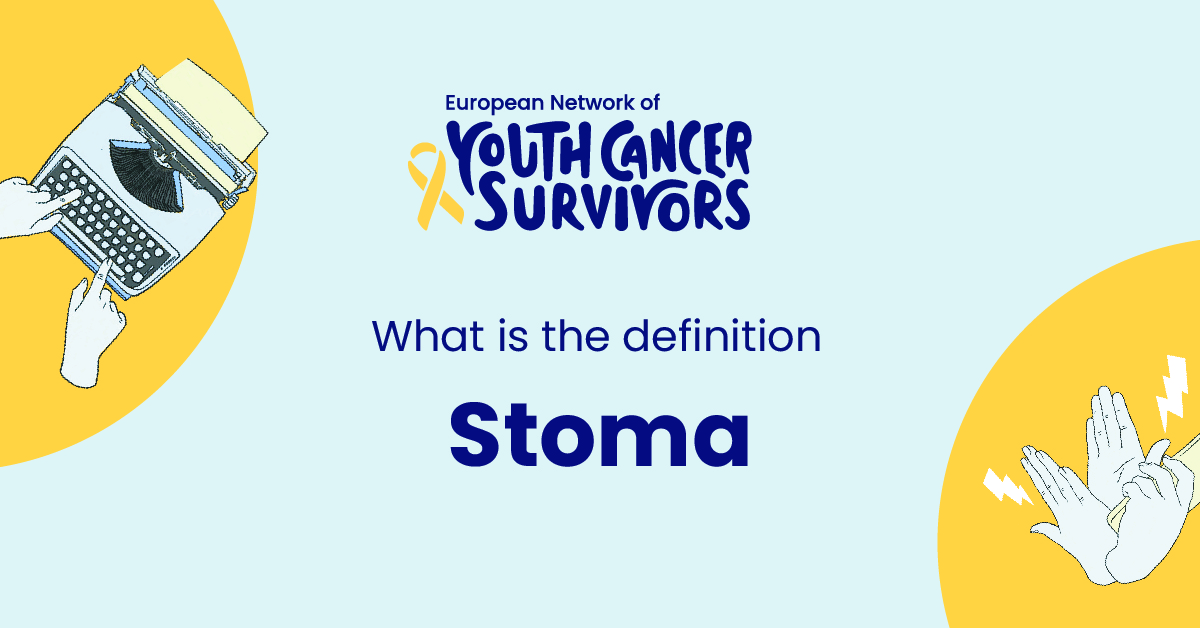
This comprehensive guide will provide an in-depth understanding of stoma, its different types, reasons for stoma surgery, and life after it. For people living with a stoma, this article presents a source of information, answering common questions and addressing frequent concerns.
Preliminary Understanding of Stoma
“Stoma” stems from the Greek term for “opening” or “mouth”. In a medical context, it serves as a life-saving surgical procedure that creates a connection between the body’s inside and outside. Stoma patients often have to adapt to a new way of living, dealing with both physical and psychological challenges.
Understanding Stomas
Defining the Term: “What is Stoma?”
A stoma is a surgical opening on the surface of the abdomen, created to divert flow of body waste. It’s usually performed when body parts like intestines or urinary system don’t function properly. The stoma can either be temporary or permanent, depending on the patient’s condition.
Basics in Stoma
Stomas can widely vary in shape, size and location, based on the underlying disease and the type of operation performed. They are usually made in the shape of a small spout and are moist and pink, resembling the inside of your mouth.
The diverted body waste is collected and disposed of via an external bag attached to the stoma. It’s crucial to maintain proper hygiene to avoid any potential infections or skin conditions.
Classifying Stoma
The type of stoma is usually classified based on the organ from which body waste is diverted. Depending on this, stomas can be named colostomy, ileostomy, tracheostomy or urostomy, each with its own specific care and management.
Deeper Insight into Different Types of Stomas
Colostomy – Stoma for the Large Intestine
If the stoma is connected to the colon or large intestine to bypass a damaged section, it’s called a colostomy. Depending on the specific location in the colon where the stoma is attached, a colostomy may lead to different consistency and frequency of stool.
Ileostomy – Stoma for the Small Intestine
In an ileostomy, the stoma is attached to the ileum or the small intestine. This procedure is typically done when the colon is either completely removed or needs time to heal. Output from an ileostomy is usually liquid or semi-liquid and more frequent.
Tracheostomy – Stoma for the Windpipe
A tracheostomy stoma is a temporary or permanent opening created at the front of the neck into the windpipe (trachea). It is performed when breathing naturally isn’t possible, for instance, due to severe injury or swelling in the neck or face, or a blockage in the upper airways.
Urostomy – Stoma for the Urinary System
When the bladder is removed due to medical conditions, or a part of the urinary system isn’t functioning properly, a urostomy is performed. This stoma diverts urine from the kidneys out of the body, bypassing the bladder.
Reasons for a Stoma Surgery
Medical Conditions Necessitating Stoma Surgery
Conditions requiring stoma surgery include colon or rectum cancer, diverticulitis, Crohn’s disease, and many others. Injuries to the digestive or urinary tract may also necessitate a stoma.
How Stoma Surgery Help Patients
Stoma surgery relieves patients of symptoms, improves their quality of life, and in many cases, can be lifesaving. It allows their body to eliminate waste in a controlled way, often reducing pain and discomfort.
Life with a Stoma
Coping with Daily Life and Stoma Care
Adapting to life after stoma surgery can be challenging but isn’t impossible. Patients can live a fully active lifestyle with some care and management. Normal activities like work, traveling, sports can be pursued without any significant difficulties.
One significant change to expect would be adjusting to the stoma bag. Regular cleaning and changing of the appliances, skin care around the stoma, and using the right products are essential for good stoma care.
Addressing Common Fears and Misconceptions
There are many fears and misconceptions associated with having a stoma. It’s important to understand that a stoma doesn’t mean the end of a normal life. With proper care, one can lead a virtually normal life post-surgery.
People are often concerned about the visibility of the bag, odour, or potential leaks. But with advancements in medical technology, bags are now very discreet, odor-free, and less prone to leakages.
Get to know us better
If you are reading this, you are in the right place – we do not care who you are and what you do, press the button and follow discussions live

Medical Advancements in Stoma Care
Technological Progress in Stoma Surgery and Care
Medical advancements have given way to improved stoma creation and post-operative care. Minimal invasive surgeries, enhanced stoma equipment and appliances, and better stoma care guidelines have all contributed to improving patients’ quality of life.
The Future of Stoma Care
The future looks promising, with more and more research being conducted on stoma care. Emerging technologies like laser surgery and robotic assistance, regenerative medicine, and bioengineering are all contributing towards making stoma procedures safer, more efficient, and comfortable.
Conclusion
Recap of the Key Points Discussed
A stoma, while life-altering, is a life-saving procedure that allows the body to eliminate waste when natural anatomy fails. It can be necessitated due to various medical conditions, and with proper care and management, patients can lead a virtually normal life.
Final Notes on the Importance of Understanding Stoma
Insights into the complexities of stoma help break down social stigma and fears around it. It’s important for both patients and their caretakers to educate themselves about the importance of stoma, risks involved, and its post-operative care.
FAQs:
1. What is the recovery period for a person after stoma surgery?
The recovery period after stoma surgery can vary widely depending on the individual, the type of surgery, and any complications. Generally, it may take several weeks to a few months for a person to recover fully and adapt to life with a stoma. During this time, individuals will receive support and education on stoma care, and they may gradually resume their normal activities as they heal and adjust to the changes in their body. However, long-term stoma care and adjustments may be necessary for an extended period or indefinitely, depending on the underlying medical condition.
2. Can a person lead a normal life with a stoma?
Yes, many people with a stoma can lead normal and fulfilling lives. With proper care and support, individuals can adapt to life with a stoma and continue to engage in their daily activities, including work, sports, and social interactions. Stoma appliances and medical advances have made it possible for people to maintain a good quality of life while managing their stoma effectively. Education, support, and a positive outlook play significant roles in helping individuals lead normal lives with a stoma.
3. What precautions need to be taken if you live with a stoma?
Living with a stoma requires some precautions, including:
- Stoma care: Regularly clean and change the stoma appliance to prevent skin irritation and infection.
- Diet: Follow dietary recommendations from your healthcare provider to manage output consistency.
- Hydration: Drink enough fluids to stay well-hydrated.
- Physical activity: Engage in physical activity as advised by your healthcare team.
- Avoid lifting heavy objects: Be cautious with heavy lifting to prevent strain.
- Medications: Take medications as prescribed, and inform healthcare providers of your stoma.
- Emotional support: Seek support from healthcare professionals and support groups for emotional well-being.
Individual needs may vary, so consult your healthcare provider for personalized guidance.
4. What are some common challenges people with a stoma face?
Living with a stoma can present several challenges, including:
- Stoma care: Managing and maintaining the stoma and the surrounding skin to prevent skin irritation and infection.
- Dietary adjustments: Adapting to dietary changes to control stoma output consistency and avoid certain foods that may cause issues.
- Body image and self-esteem: Coping with changes in body image and self-esteem due to the presence of the stoma.
- Emotional impact: Dealing with emotional challenges, such as anxiety, depression, or feelings of isolation, which can result from the stoma surgery and its impact on daily life.
- Odor and noise: Managing concerns about potential odors or noise associated with the stoma.
- Physical activity: Finding ways to stay active and engage in physical activities while considering the limitations posed by the stoma.
- Social and lifestyle adjustments: Adapting social activities and lifestyle choices to accommodate the stoma and its care.
- Clothing choices: Selecting appropriate clothing that conceals the stoma appliance or provides easy access for maintenance.
- Support and education: Seeking information and support from healthcare professionals, support groups, and peers to navigate the challenges associated with living with a stoma.
It’s important to note that with time, support, and education, many individuals are able to overcome these challenges and lead fulfilling lives with a stoma.
Healthcare providers and support groups can play a crucial role in helping individuals address these issues effectively.
5. How has modern medicine changed the way stomas are cared for?
Modern medicine has significantly improved stoma care by:
- Advanced appliances: Introducing more comfortable, discreet, and effective stoma appliances that are easy to use and offer better adhesion, reducing leakage and skin irritation.
- Minimally invasive surgery: Developing minimally invasive surgical techniques that lead to quicker recovery times and less post-operative pain.
- Stoma education: Providing comprehensive education and support for individuals with stomas, empowering them to manage their stoma effectively.
- Specialized care teams: Establishing dedicated stoma care teams comprising nurses, surgeons, and specialists to provide personalized care and guidance.
- Improved medications: Developing medications and treatments to control stoma-related issues like diarrhea or excess gas.
- Psychosocial support: Recognizing the importance of addressing the emotional and psychological aspects of living with a stoma and providing counseling and support services.
- Innovation: Continually advancing stoma care technology and techniques to enhance the overall quality of life for individuals with stomas.
These advancements have made it possible for people with stomas to lead more comfortable and fulfilling lives while effectively managing their stoma care needs.

















Comments
Thank you. Comment sent for approval.
Something is wrong, try again later